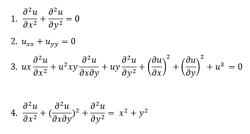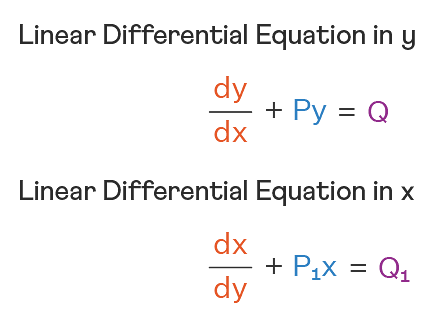Match List I with List II.
List-I List-II A. Benzene sulphonyl chloride I. Test for primary amines B. Hoffmann bromamide reaction II. Anti Saytzeff C. Carbylamine reaction III. Hinsberg reagent D. Hoffmann orientation IV. Known reaction of Isocyamates
Choose the correct answer from the options given below:
Match List I with List II.
| List-I | List-II |
| A. Benzene sulphonyl chloride | I. Test for primary amines |
| B. Hoffmann bromamide reaction | II. Anti Saytzeff |
| C. Carbylamine reaction | III. Hinsberg reagent |
| D. Hoffmann orientation | IV. Known reaction of Isocyamates |
Choose the correct answer from the options given below:
- A-IV, B-III, C-II, D-I
- A-IV, B-II, C-I, D-II
- A-III, B-IV, C-I, D-II
- A-IV, B-III, C-I, D-II
The Correct Option is C
Solution and Explanation
(A) Benzene sulphonyl chloride is also known as Hinsberg reagent.
(B) Hoffmann bromamide reaction involves conversion of amide to amine having one C-atom less. This reaction involves isocyanate as intermediate.
(C) Carbylamine reaction is a test given by all primary amines.
(D) Hoffmann orientation refers to the addition of molecules to unsymmetrical alkenes according to anti Saytzeff’s rule.
• Correct match is: A – III; B – IV; C – I; D – II
Top Questions on Rate of a Chemical Reaction
- The speed at which a chemical reaction takes place is called the rate of reaction. The rate of reaction depends on various factors like concentration of the reactants, temperature, etc. The relation between the rate of reaction and the concentration of reacting species is represented by the equation \( r = k[A]^x[B]^y \), where \( x \) and \( y \) are the order of the reaction with respect to the reactants A and B, respectively. The overall order of the reaction is \( x + y \). The rate of reaction can also be increased by the use of a catalyst which provides an alternate pathway of lower activation energy. It increases the rate of forward and backward reactions to an equal extent. It does not alter the Gibbs energy of the reaction.
- CUET (UG) - 2025
- Chemistry
- Rate of a Chemical Reaction
- Arrange the following compounds in increasing order of their acidic strength: (A) 3-nitrophenol
(B) 3,5-Dinitrophenol
(C) 2,4,6-Trinitrophenol
(D) Phenol
- CUET (UG) - 2025
- Chemistry
- Rate of a Chemical Reaction
- In a reaction, \( 3A \rightarrow \text{Products} \), the concentration of \( A \) decreases from 0.6 mol L\(^{-1}\) to 0.3 mol L\(^{-1}\) in 20 minutes. What is the rate of the reaction during this interval?
- KEAM - 2025
- Chemistry
- Rate of a Chemical Reaction
- Which among the following is a false statement?
- CBSE CLASS XII - 2025
- Chemistry
- Rate of a Chemical Reaction
Observe the following reactions:
\( AB(g) + 25 H_2O(l) \rightarrow AB(H_2S{O_4}) \quad \Delta H = x \, {kJ/mol}^{-1} \)
\( AB(g) + 50 H_2O(l) \rightarrow AB(H_2SO_4) \quad \Delta H = y \, {kJ/mol}^{-1} \)
The enthalpy of dilution, \( \Delta H_{dil} \) in kJ/mol\(^{-1}\), is:- AP EAMCET - 2024
- Chemistry
- Rate of a Chemical Reaction
Questions Asked in JEE Main exam
A conducting bar moves on two conducting rails as shown in the figure. A constant magnetic field \( B \) exists into the page. The bar starts to move from the vertex at time \( t = 0 \) with a constant velocity. If the induced EMF is \( E \propto t^n \), then the value of \( n \) is _____.

- JEE Main - 2025
- Magnetic Field
- Concentrated nitric acid is labelled as 75%by mass. The volume in mL of the solution which contains 30 g of nitric acid is: Given: Density of nitric acid solution is 1.25 g/mL.
- JEE Main - 2025
- Solutions
- A physical quantity \( Q \) is related to four observables \( a \), \( b \), \( c \), and \( d \) as follows: \[ Q = \frac{a b^4}{c d^2} \] Where:
- \( a = (60 \pm 3) \, \text{Pa} \),
- \( b = (20 \pm 0.1) \, \text{m} \),
- \( c = (40 \pm 0.2) \, \text{N·s/m}^2 \),
- \( d = (50 \pm 0.1) \, \text{m} \).
Then the percentage error in \( Q \) is:- JEE Main - 2025
- Error analysis
- Let circle $C$ be the image of
$$ x^2 + y^2 - 2x + 4y - 4 = 0 $$
in the line
$$ 2x - 3y + 5 = 0 $$
and $A$ be the point on $C$ such that $OA$ is parallel to the x-axis and $A$ lies on the right-hand side of the centre $O$ of $C$.
If $B(\alpha, \beta)$, with $\beta < 4$, lies on $C$ such that the length of the arc $AB$ is $\frac{1}{6}$ of the perimeter of $C$, then $\beta - \sqrt{3}\alpha$ is equal to: - Assume a living cell with 0.9%(\(w/w\)) of glucose solution (aqueous). This cell is immersed in another solution having equal mole fraction of glucose and water. (Consider the data up to first decimal place only) The cell will:
- JEE Main - 2025
- osmosis
Concepts Used:
Types of Differential Equations
There are various types of Differential Equation, such as:
Ordinary Differential Equations:
Ordinary Differential Equations is an equation that indicates the relation of having one independent variable x, and one dependent variable y, along with some of its other derivatives.
\(F(\frac{dy}{dt},y,t) = 0\)
Partial Differential Equations:
A partial differential equation is a type, in which the equation carries many unknown variables with their partial derivatives.

Linear Differential Equations:
It is the linear polynomial equation in which derivatives of different variables exist. Linear Partial Differential Equation derivatives are partial and function is dependent on the variable.

Homogeneous Differential Equations:
When the degree of f(x,y) and g(x,y) is the same, it is known to be a homogeneous differential equation.
\(\frac{dy}{dx} = \frac{a_1x + b_1y + c_1}{a_2x + b_2y + c_2}\)
Read More: Differential Equations